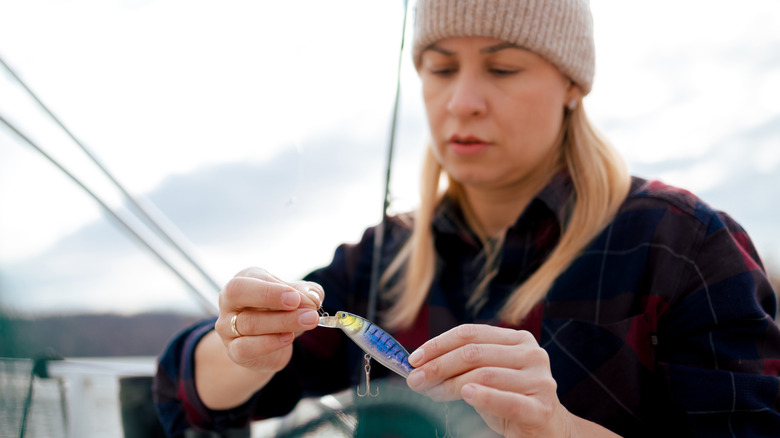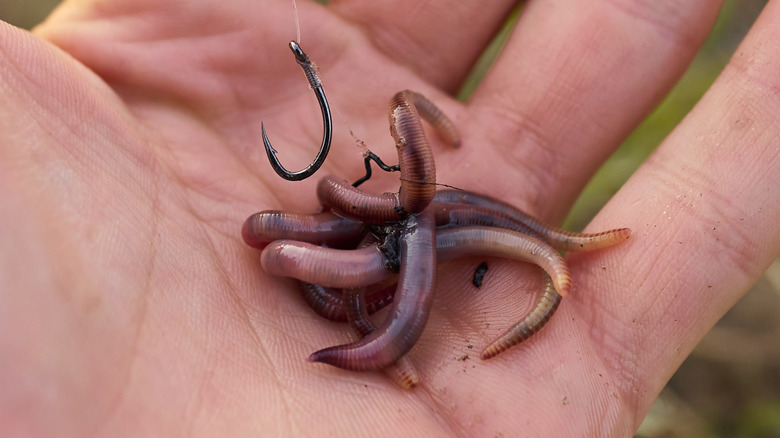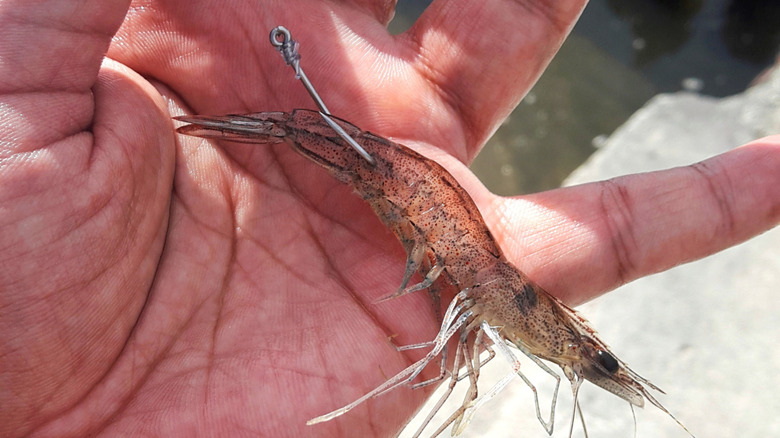Our Tips For Choosing The Right Type Of Bait For Your Fishing Trip
We may receive a commission on purchases made from links.
Over a lifetime of fishing, including a couple decades as a fishing guide and 30 years as an outdoor writer, I have spent countless days pursuing fish in several states and countries in both freshwater and saltwater. Those experiences have taught me a number of things about fishing, including how to determine the best time of day to fish, as well as the importance of using the right bait or lures. Just as importantly, I've been able to learn some valuable lessons on how to choose the right type of bait.
No matter where you happen to be fishing or what you are fishing for, there are some generalities that apply to choosing the right type of bait. However, there are also a number of variables that are specific to the type of water, species of fish, time of year, available prey items, prevailing weather conditions, and more. So, whether you are wetting a line in your backyard pond or traveling to a new locale for a DIY angling adventure, these tips can help you choose the right type of bait for your fishing trip.
Pay attention to available food sources
Regardless of where in the world you are pursuing fish, there are some definites that apply. First, those fish need to eat. Secondly, predator fish can only eat whatever prey items are available to them. So, the common sense approach to choosing the right bait is to try and use whatever food sources are available to the fish or artificial lures that imitate the prey items.
This is where the old saying of "match the hatch" comes into play. Originally applied to the choice of fly patterns among fly fishermen, it was meant to direct anglers to choose imitations of whatever insects happened to be hatching at that point in time. However, it can be applied to include any type of food source in fresh or saltwater, including insects, minnows and small baitfish, crabs, shrimp, eels, and more.
Anglers should also keep in mind, the available food source can change. This change may be due to seasonal hatches or migrations. It can also have to do with location. At times, the main available food source may be different within a short distance along the same river or in different portions of a lake or bay. Simply put, the prevalent food source or prey item in that location at that moment should be used or imitated.
Artificial or natural?
Beyond determining the prey items and potential food sources fish have available to them, anglers are confronted with the question of whether to use natural baits or artificial lures. There are advantages and disadvantages to each. For some fishermen, it is simply a matter of personal preference and they always use either artificial or natural regardless of location or target species. Others consider the advantages and disadvantages of each. These fishermen may utilize natural baits in some instances and artificial lures in others.
Whether it be worms for panfish or shrimp for seatrout, almost every angler in both freshwater and saltwater starts out with natural bait. The vast majority of fishermen continue to use natural baits throughout their angling careers. The foremost advantage to natural bait is, well, fish eat it. It is, after all, the real thing. Additionally, it is relatively easy to use. The biggest disadvantage is that keeping bait fresh or alive often takes effort and equipment, so it can be cumbersome for travel. You also may find yourself catching unwanted species more often with natural baits. Additionally, some areas do not allow natural baits — especially certain stretches of trout streams and bass lakes.
Artificial lures can be used to imitate a wide variety of natural prey items. They can be easily carried, making them preferable for travel or backpacking. Artificial lures involve less effort as well, since you do not have to buy or catch the bait before going fishing or worry about keeping it fresh or alive. But, artificial lures tend to take a bit more skill to effectively utilize. While there are times artificial lures outproduce natural baits, when the bite is slow, fish are often more inclined to take a natural bait than be fooled by an artificial one.
Choosing the right natural baits for freshwater
Across the U.S., worms, minnows, grasshoppers, and crayfish are considered to be the best freshwater baits to catch a variety of species. However, at different times of year or in different areas, there may be other natural food sources certain species are feeding on — mayflies for rainbow trout or dragonflies for bass, for example. Again, the idea is to utilize the prey items which are present and being eaten.
Worms are perhaps the most versatile and catch the widest variety of species. They are also very easy to keep alive and carry with you. Minnows and crayfish are probably the next most versatile choice, but are better bets if you are specifically targeting species such as bass or crappie. However, they need to be kept alive in containers such as the Frabill insulated bait bucket. Grasshoppers, and crickets are also very productive for a variety of species and can typically be caught by hand near where you are fishing. They can be kept alive and carried in a device such as the Frabill cricket cage. While most baits work best alive, some species, such as catfish, will readily eat dead bait as well.
The caveat to these baits is they all have to be purchased or caught. This can cost you money, time, or both. Additionally, it is important to make sure bait is allowed on whichever body of water you are fishing, but also that the particular type of bait you hope to use is legal in that area. So, be sure to research the rules and regulations for both the state and water body you are fishing before utilizing any natural baits.
Choosing the right natural baits for saltwater
When it comes to choosing the right natural baits for saltwater, much of it will depend on what coast you're fishing — Atlantic, Pacific, or Gulf — as well as which species you are targeting. Again, the legalities are always an issue you need to pay attention to. In saltwater, it is very common to use small finfish to target larger fish species. But, regulations vary from state to state as to which species of finfish are legal as bait. There are also regulations regarding the use of crustaceans, such as crabs, as well as other marine animals such as eels, both in regards to size and seasons in which they can be used for bait.
Shrimp is probably the most versatile of all the natural saltwater baits. Just about every species that swims in saltwater will eat shrimp. Shrimp are almost always most effective when kept alive in something like the Frabill Flow and Troll bait bucket. They can still catch a variety of species when used freshly dead, although they still need to be kept cool, as they tend to get too soft to be utilized as bait if they get warm.
Fishermen can also utilize a variety of baitfish such as mullet, mud minnows, or various small finfish for bait. These can be purchased or caught in a cast net where legal. Again, they are typically most effective when used live. However, dead or larger baitfish can be effective for a number of species when cut into chunks. Other creatures such as eels, crabs, sand fleas, and squid are also very effective baits during certain times of year and for specific species.
How to select the right style and color of artificial lures
Artificial lures come in a wide range of sizes, shapes, styles, and colors. They may be made from hard plastic, wood, soft plastic, or metal. Whether you are fishing in fresh or saltwater, the first step is to choose an artificial lure your target species is feeding on or is likely to eat. You should also choose a size of lure that species would most typically feed on. Although the size selection is typically based on the size of the fish or the size of the fish's mouth — a fish with a smaller mouth cannot eat a giant bait — when fish are finicky, going with a lure that is smaller than the typical bait size for that species is one of the best ways to catch more fish.
When it comes to the color of lures, that will typically be determined by the air and water conditions. On bright, sunny days reflective baits can cause fish-attracting flash, especially in clear to moderately turbid water. When not throwing reflective baits, as a rule, clear skies and clear water calls for transparent, light, or natural-colored baits. Murkier water calls for either bright or white lures, which will be more visible from a distance, or darker lures, which cast a more distinct profile. In these conditions, the lures should be opaque as opposed to translucent.
Those same guidelines apply to dark skies and clear water. However, dark skies and murky water calls for baits that either glow or are very dark and opaque. Glowing lures can be seen from a distance even in the dark. Keep in mind, the glow properties in these lures need to be activated with light. It can be helpful to carry a small flashlight for this purpose. Black or very dark, opaque lures create a very distinct silhouette, which fish are able to locate in dark conditions.





